- Todd the Father
- Todd the Son
- Todd the Spirit
- 6 Posts
- 35 Comments
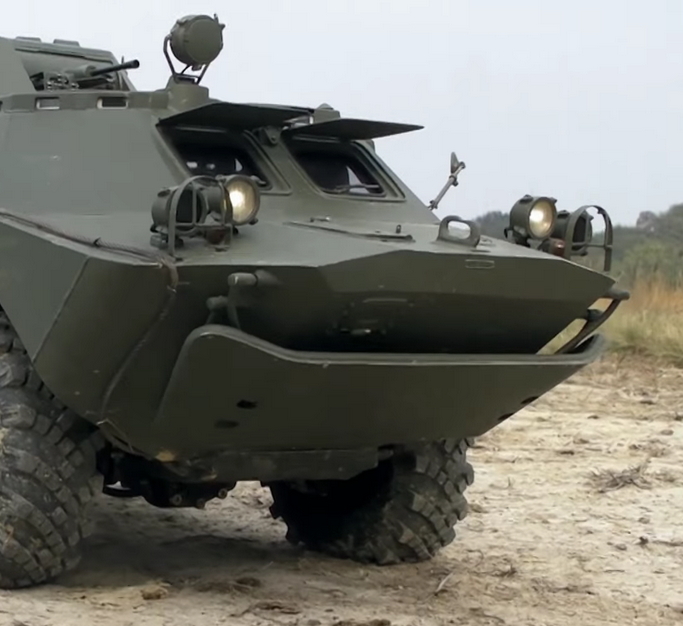
 ·1 year ago
·1 year agoSanctions really are the biggest own goal.
It would be the LEAP not the PD-14 in the MC-21, if not for sanctions. In normal conditions, it's a winner takes all market no matter how tiny the difference is every cent counts to carriers. Only the single most efficient engine available would've made sense and it turns out sanctions did just that.
The sanctions are the largest boon to Chinese semi tool companies; they were snubbed by big name Chinese tech beforehand. Now, fear and uncertainty of supply weighs down the western competition. ASML in China has been brought down to SMEE's level; next year, ASML can't sell anything more advanced than what SMEE can make.
SMIC would have the same issues as Global Foundries did with justifying the investment in 7nm. The few fabless companies in China that use leading edge processes are wedded to TSMC. If Huawei wasn't there as a guaranteed customer, SMIC wouldn't have been able to get their investment to pay off. Huawei didn't even consider domestic alternatives outside of what they themselves make before the sanctions. The Mi 10 Ultra, with a QCOM SoC, had more domestic parts than the Huawei equivalent.
Even advanced engines can't redeem the F-35 though, it's still slower than the JF-17.

 ·1 year ago
·1 year agoYes, there will be progress but that's not really what Moore's Law is about. Moore's Law is not an observation that there will be progress eventually but an observation at specific rate of that progress. It's not "transistors will double eventually", or "transistors will increase somewhat every 2 years".
With exponential growth, the tiniest decrease compounds to a major difference. 2 to the power of 3 is 8; the A16 has 16B transistors not 26B. That's with the gains of the last DUV nodes, 16->10->7nm. EUV to EUV, 5nm to 3nm doesn't match up to that. It seems transistor growth with EUV nodes is becoming linear so not really in line with the exponential growth of Moore's Law.
The chips could be larger but flagship phones would have to become even more expensive, and physically larger to dissipate the extra heat. Dennard Scaling mattered more in practice than Moore's Law ever did but that ended over a decade ago. At the end of the day, all the microarchitecture and foundry advances are there to deliver better performance for every succeeding generation and the rate of that is definitely decelerating.
In 3 years, the only Android chip that has a perceivable difference in performance from the Kirin 9000 is the 8 Gen 2, which cost $160 just for the chip. That performance difference isn't even enough to be a selling point; the Mate 60 Pro is in the same price range as those 8 Gen 2 phones yet is still perfectly competitive in that market segment.

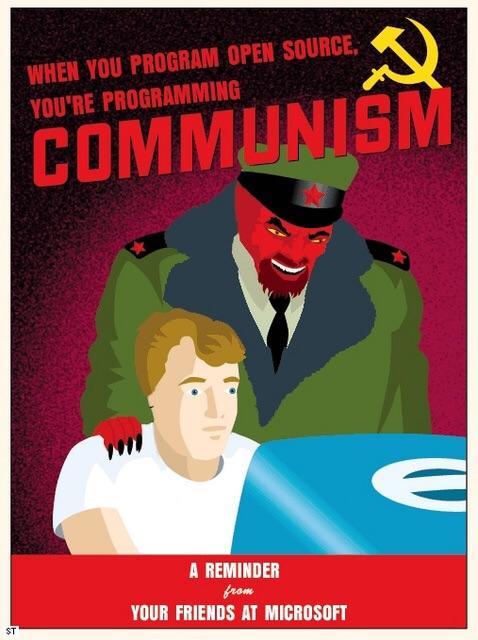 ·1 year ago
·1 year agoSMIC is the fab that Huawei contracts to make the Kirin 9000S. Huawei has the capability to make most other chips itself just not mobile phone SOCs.

 ·1 year ago
·1 year agoAMD always having the process advantage over Intel and Nvidia but still ending up as the underdog is puzzling.
AMD Zen 2 on 7nm should've destroyed Comet lake on 14nm but it didn't. Rocket Lake faired a lot worse against Zen 3 but it was an iffy 10nm to 14nm port job.
AMD Navi GPUs on 7nm somehow were less efficient than Nvidia's Turing on 12nm(16nm+) while also not having ray tracing or tensor cores. Nvidia were left cocky enough to go for Samsung's discount 8nm the gen after instead of attaining process parity.
It's going to get worse because the gains from each succeeding node diminishes so AMD can no longer count on the gains to make them competitive.

 ·1 year ago
·1 year agoIt doesn't help that Qualcomm's 888, and 8 Gen 1 were a disappointment. Even more so since they were the debut of ARM's Cortex-X series of performance cores. Those were supposed to be ARM's attempt at matching Apple's custom cores. Thermal throttling issues meant that they weren't even real upgrades from the 865 in terms of sustained performance.
The original Kirin 9000 was from 2020. Hard to improve performance, if the US government is doing everything to hinder your ability to make chips in the first place. Huawei matching the original TSMC 5nm EUV chip with just SMIC 7nm DUV is a miracle.

 ·1 year ago
·1 year agoWell look at the other contract fabs that could buy EUV scanners if they wanted to.
GlobalFoundries gave up on 7nm so 14/12nm is the best they have. UMC barely makes any 14nm chips so they definitely aren't pursuing anything below 7nm. Getting to 7nm is an investment few can make and it won't pay off for most. The number of fabless chip companies that can afford to design for <7nm and need the leading edge in performance is tiny. A high price of entry to serve so few customers.
SMIC is only the third pure play contract fab to offer <=7nm and Samsung needed EUV to get to 7nm unlike SMIC and TSMC.
Show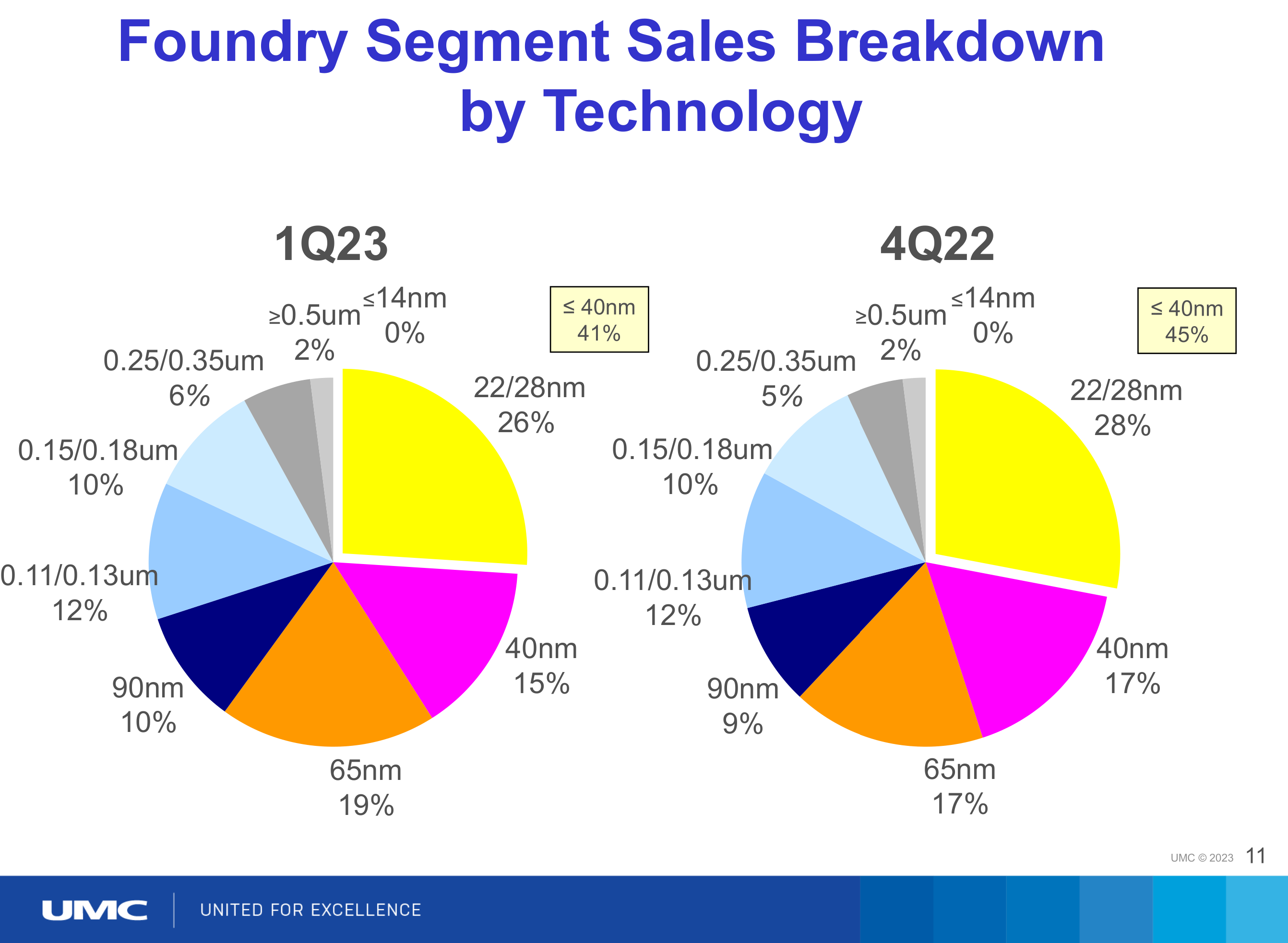
Judging by the performance and density of the Kirin 9000S, SMIC's 7nm DUV is at least as good as Samsung's 5nm EUV. The same A510 cores made with SMIC's 7nm are as efficient if not more so than those made with Samsung 4nm.
Show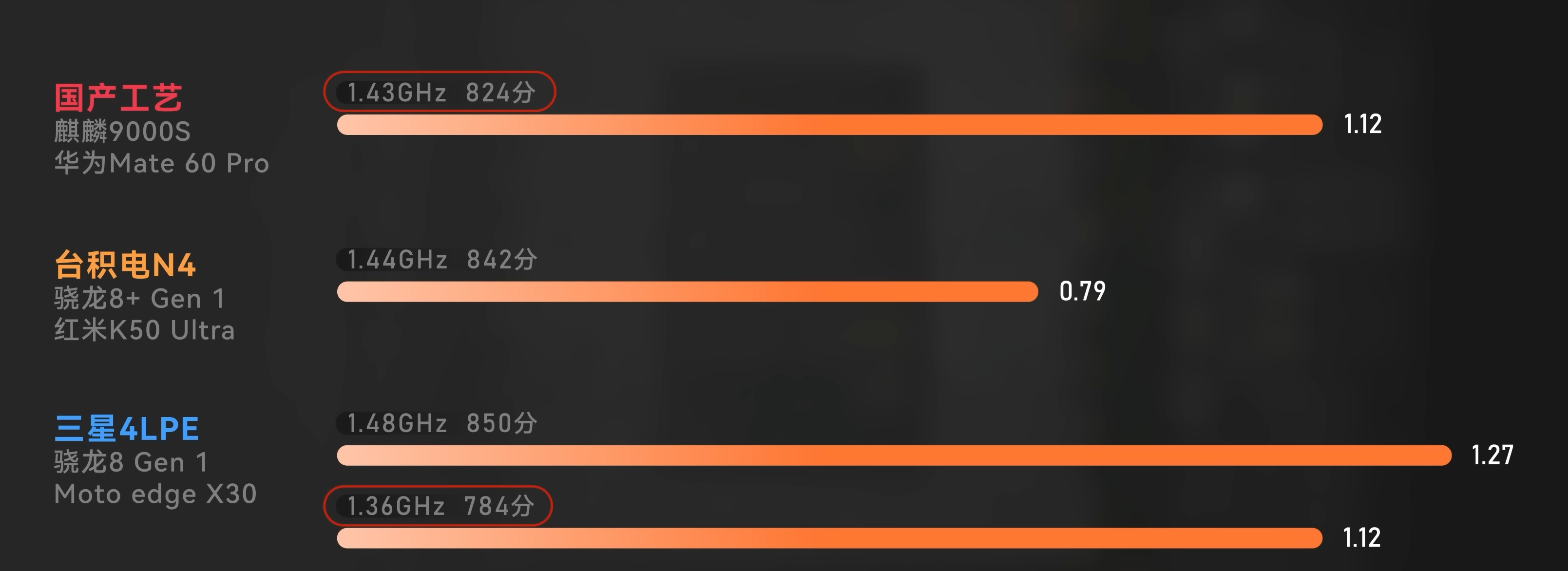
The previous top Huawei phone, the P60 Pro has the 4G variant of the 8+ Gen 1, which was made with TSMC 4nm. The Mate 60 Pro being technically a downgrade in process node is something few if any of its users will actually notice in practice. Huawei could've easily just made a 5G modem and paired it with an 8 Gen 2. It would've been a lot easier to make a tiny modem yield but they chose the harder option of making an entire SOC. They succeeded in matching if not surpassing the TSMC 5nm made original that stopped being made on September 15, 2020. All the sanctions could do was delay further production of the Kirin 9000 for 3 years.

 ·1 year ago
·1 year agoI don't think the CPU performance is down to optimization. The 4 custom Taishan performance cores having hyper threading is probably why. The Kirin 9000S has 8 cores / 12 threads, which is why the multi-core score is so high.
The GPU drivers definitely aren't ready yet; it can't render Genshin Impact correctly. It's not an ARM Mali reference design; it's Huawei own Maleoon 910. The only things from ARM are the Cortex-A510 efficiency cores, and the instruction set.

 ·1 year ago
·1 year agoTransistor density isn't doubling every 2 years.
N3E is only 1.6x denser than N5 and that only apply to logic transistors. TSMC assumes logic makes up 50% of a hypothetical chip to arrive at 1.3x scaling. It wouldn't come anywhere near close to actually doubling in real chips.
Show
Analog and SRAM scaling has been decelerating for years. TSMC N3E has the same SRAM cell size as N5. Samsung 4nm has the same SRAM cell size as 7nm. Because they don't scale with logic, every succeeding generation these components will take up more and more of the silicon hence AMD's move to chiplets.
Show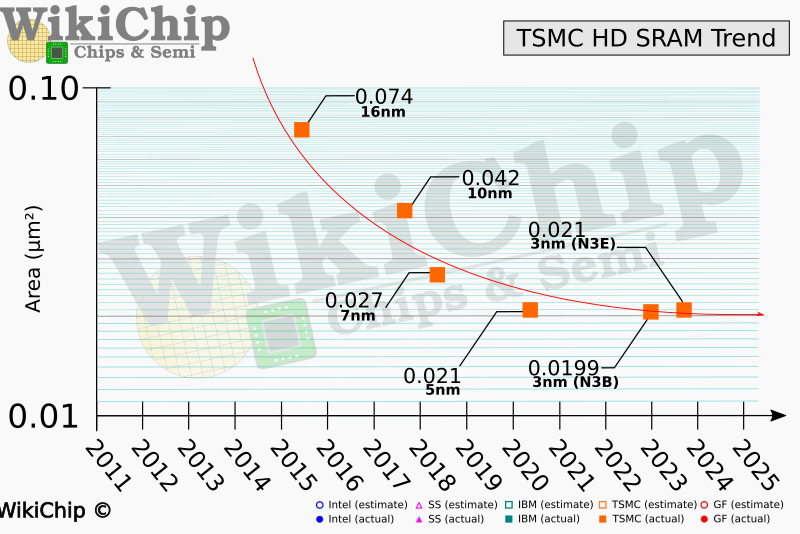

 ·1 year ago
·1 year agoThe Kirin 9000S is only 2% larger than the original 9000, which was made using TSMC 5nm. It performs far better than any 7nm chip.
CPU Performance almost matches the 4nm Exynos 2200, which because the 2300 was a no show is the best chip Samsung has.
Show
GPU Performance although not a match for the original 9000 still exceeds the 5nm Snapdragon 888.
Show
Geek Bench 5 Multi/Single core Scores
Show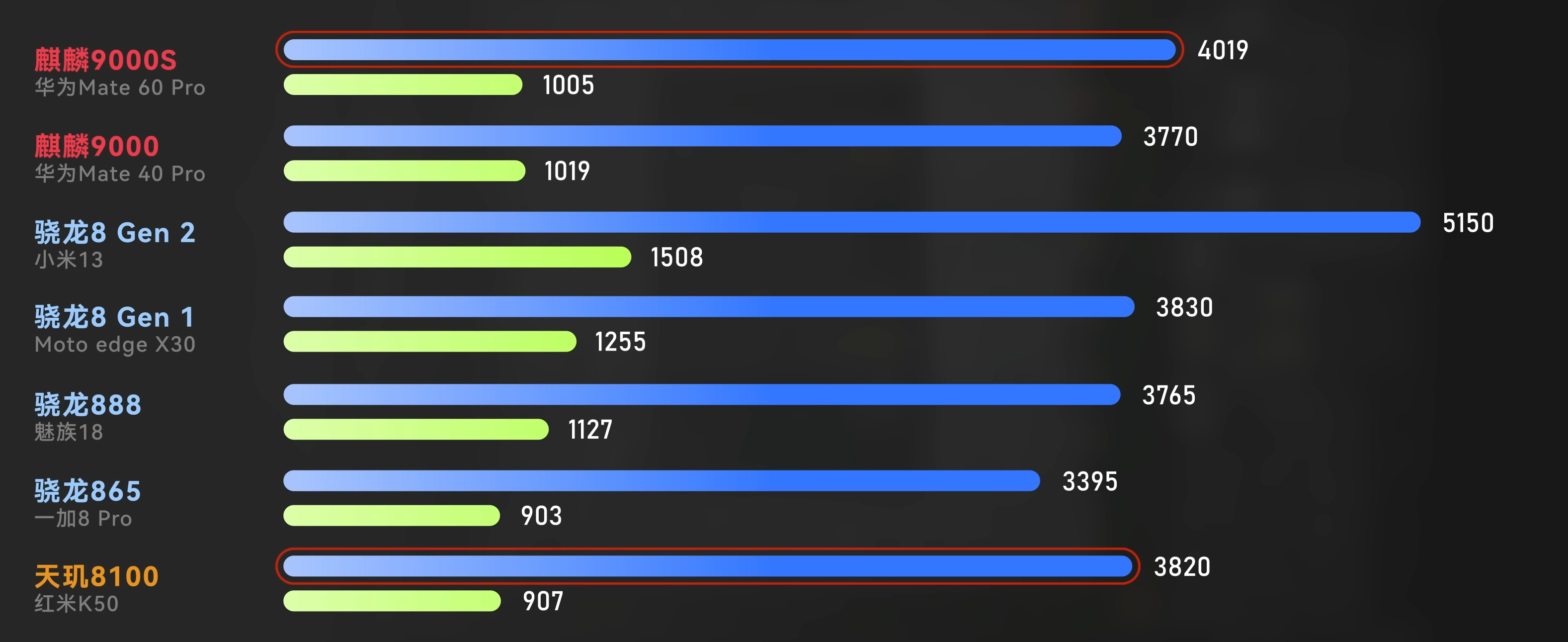

 ·1 year ago
·1 year agoMen of War
Red Faction Guerilla

 ·1 year ago
·1 year agoJust copy all the contents of the SD card over to be safe. Retroarch might be storing files on the SD card and the BIOS folder might be separate from the ROMs.

 ·1 year ago
·1 year agoHaving firmware on the SD card is unique to Linux handhelds. Android handhelds are basically phones so the operating system is in the flash chip on the motherboard.

 ·1 year ago
·1 year agoQualcomm being the only company allowed to sell 4G SOCs to Huawei was a bullshit move in the first place.
The only reason Qualcomm sold so many to Huawei was because the US blocked Mediatek and UNISOC. The US government never gave a legitimate reason why they never granted permission to the competition that applied to supply Huawei.
Starfield demonstrates a complete lack of any cohesive vision in story, themes, and gameplay.
The artstyle has that generic "hard" space sci-fi look. I could just as well be looking at Star Citizen, Interstellar, or The Expanse. The locations might sound interesting in theory but are executed in the most bland way possible. It's kind of hilarious to think that these tiny settlements are supposed to be interplanetary capital cities. I do understand that unrestricted player movement means that they can't really place a massive city in the background like in the Mass Effect Trilogy but explicitly calling the places you visit capitals is absurd.
Bethesda tries hard to ape Serenity-esque space westerns with Akila. An interplanetary capital without paved roads in its main thoroughfare. It really clashes with the rest of the game's attempts at being seen as a believable "hard" sci-fi. A vision of a car free future brought to you by the limitations of the Creation Engine. The game engine is no excuse for not having a space horse though. Traversing procedurally generated terrain on foot is a waste of time.
The vaguely utopian corporate solarpunk of New Atlantis is soulless and not in the satirical good way. Which is ironic because it seems to be inspired by Starship Troopers.
Neon, the cyberpunk offworld oilrig tries and fails to be a hip seedy dystopia. It looks more like the Outer World's Groundbreaker Promenade than Mass Effect 2's Omega. It doesn't illicit feelings of despair from the callous disregard of humanity as a consequence of greed without limits. It's just a shopping mall with boring corporate suits who try to sound edgy.
The same goes for the music. It doesn't convey any emotion and isn't uniquely identifiable. Inon Zur's work for the Bethesda Fallouts weren't this forgettable so it's probably down to Bethesda's lack of direction. The music doesn't build into the atmosphere of any location or any story moment. I don't think Jeremy Soule would've made a difference, and it's good that Bethesda doesn't associate with an accused rapist. That said I'd still say his work with Oblivion was one the best soundtracks of any game.
Ship combat has controls like Freelancer except it plays terrible. The ships feel heavy and are unresponsive to control so it doesn't really work as an arcade space combat game. The mouse first controls with no flight stick support, fast travel, and the inability to actually dock/land manually make it an automatic fail as a spaceflight sim. The ability to fast travel instantly to any previously visited location is good though. With its quest design, it would be painful to play Starfield if they went the sim route.
The gun play is identical to Fallout 4 but plays worse due to procedurally placed enemies and levels. It has to rely on the AI, weapons and enemy design. None of those elements are able to make the fights interesting. It's still a lot better than any of the other spaceflight games with ground combat though.
The bar is being dropped so hard that Mass Effect Andromeda is retroactively becoming a great game. In the universe that Starfield is an 87, Andromeda is at least a 97.
I'll still play Starfield over Elite Dangerous, or No Man Sky since it has actual content. It isn't all procedurally generated and has an actual story with characters. I'll finish the main quest at least, the game isn't aggressively bad in anyway. It's just all around sterile and uninspiring. I still have the hope that somewhere out there I might find a branching side quest that is remotely as good as those in Oblivion, or New Vegas.

 ·1 year ago
·1 year agoThe US government placed Huawei into the US's so called "entity list". Qualcomm needs US government authorization to sell to Huawei and they're limited to selling 4G SOCs.
The P60 having the SD 8+G1 might be lag from Qualcomm having to make a 4G variant or lag from Huawei transitioning from Kirin to SD SOCs. Alternatively it could just be that the SD 8G2 is not worth the price Qualcomm is selling it at given that Poco doesn't bother to use it for their best phone, the F5 Pro.
There are no trade restrictions to selling to other Chinese smartphone brands. Qualcomm would collapse if it weren't allowed to sell to them. BBK, Transsion, and Xiaomi buy up most of Qualcomm's phone chips and make most of the world's phones. Samsung uses its own Exynos for the A series phones that make up the bulk of its sales.

 ·1 year ago
·1 year agoA SMIC "7nm" Cortex-A510 core is more efficient than a Samsung 4nm LPE Cortex-A510 core although TSMC 4nm remains incomparable.
Show
The Kirin 9000S is about the same size as the original Kirin 9000 chip, which was made using TSMC 5nm. That implies a transistor density that is closer to 5nm than it is to 7nm.
It is competitive with 5nm chips. Performance and efficiency are equivalent to the SD 888, and better than the Exynos 2100. The Kirin 9000S has custom Taishan cores with SMT allowing it to achieve a better multi-core score than all but the SD 8G2. Still the Kirin 9000S doesn't quite match the power efficiency of the original 9000 and the custom Maleoon 910 GPU doesn't have the raw performance of the original's Mali G78 MP24.
Show
All evidence points to SMIC "7nm" being comparable to Samsung 5nm LPE in density, performance and efficiency.
Even with just auto translated subtitles, the Geekerwan video was incredibly informative unlike the...
Trash article by Bloomberg as always absolutely bereft of any of the technical details that might have made the TechInsights report actually interesting. Instead they decide it's better to waste the reader's time by shoving in the useless opinions of stock hawkers, business school "analysts", and people who are paid to brainlessly toe the state department line. Nobody left with a relevant computer engineering background in the west apparently. What a bait-and-switch, I regret bothering to read it. I can't stand the slimy way US mainstream media tries to manipulate sentiment.

 ·1 year ago
·1 year agoAlthough I'd say these channels are more accurately described as apolitical analysis based on facts.





Neoliberals will do anything to downplay or outright deny any historical incident where import substitution lead to industrialization. Creating captive markets for the dumping of manufactured products was one of the prime drivers of colonialism, which continued under neocolonialism. With sanctions, the US is unintentionally undermining their own hegemony. Businesses like having access to markets and moats. They are giving moats to one side and stripping access to the other.
Sanctions will do for Chinese chip makers what the great firewall did for Chinese internet giants.
Seeing /u/dylan522p acknowledge reality somewhat is refreshing although the conclusion is the predictable "Washington is just sanctioning wrong, if they followed my foolproof sanction regime it would magically work". Liberals attacking him for this article is quite hilarious. They're really intolerant of even the slightest deviation from US state department rhetoric.